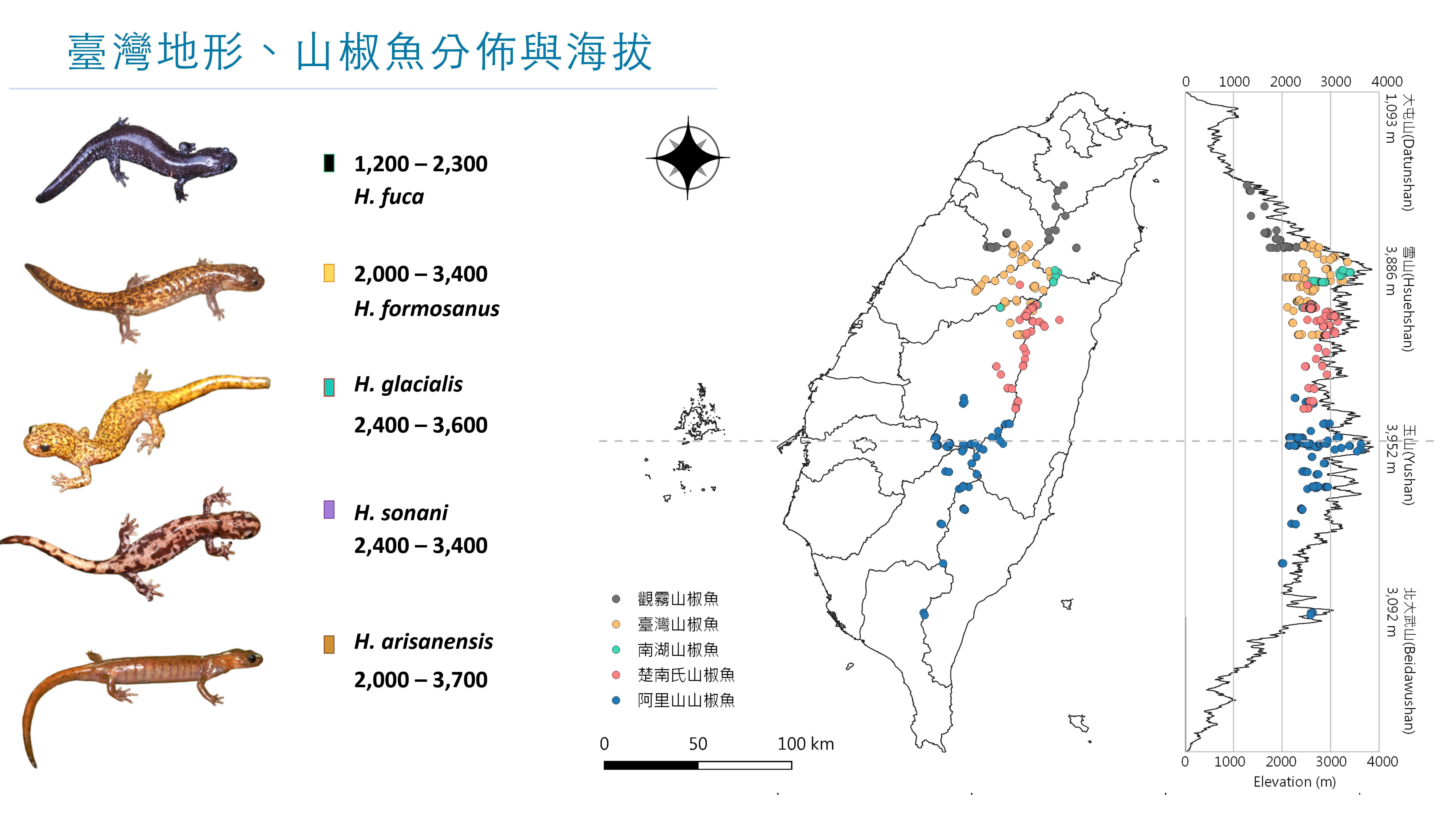2023/04/26
Hynobiidae Geographical Distribution Map in Taiwan Completed by Prof. Ju Yu-Ten’s Team

From 2020 to 2022, Shei-Pa National Park, Taroko National Park, and Yushan National Park integrated their resources for Prof. Yu-Ten Ju of NTU’s Department of Animal Science and Technology to lead a cross-domain integration project titled “Habitat, Genetic Structure, and Biology of Taiwan Salamander (Hynobiidae) Distribution in Alpine National Parks.” The research covers areas surrounding the national parks to draw a map of the geographical distribution of Hynobiidae, collect their life history data, and infer their habitat needs through an analysis of their feeding habits.
The Hynobius salamander (Hynobiidae) was initially discovered in the Cuifeng and Nenggao Police Posts in 1919, marking the first record of Hynobiidae observed in a subtropical region. Later, hynobius arisanensis was also discovered in the Alishan area. In 2008, Prof. Kuang-Yang Lue and Dr. June-Shiang Lai from National Taiwan Normal University (NTNU) conducted a study on Hynobius fuca and Hynobius glacialis. However, to fully understand the evolutionary history of the five endemic species of Hynobius salamander, it is necessary to develop a geographical distribution map and overlay information; such as mountains, elevations, aspects, rivers, and vegetation with the genetic information of the five Taiwan Hynobius salamanders.
Building upon Prof. Lue and Dr. Lai’s research, Prof. Ju’s team at NTU completed a distribution map of Hynobiidae in Taiwan in 2022, which includes the feeding habits of the five species and the life history of four of the species. Regarding feeding habits, adult Hynobiidae primarily feed on invertebrates on the soil surface, with a preference for Insecta, followed by Malacostraca, Arachnida, Chilopoda, and Diplopoda. The life histories of Hynobius fuca, Hynobius formosanus, Hynobius sonani and Hynobius arisanensis were also examined and reported. It was found that they mostly spawn from autumn to early spring, hatch from late winter to spring, and complete metamorphosis to leave the water in summer.
Implemented by
-
NTU’s Department of Animal Science and Technology




